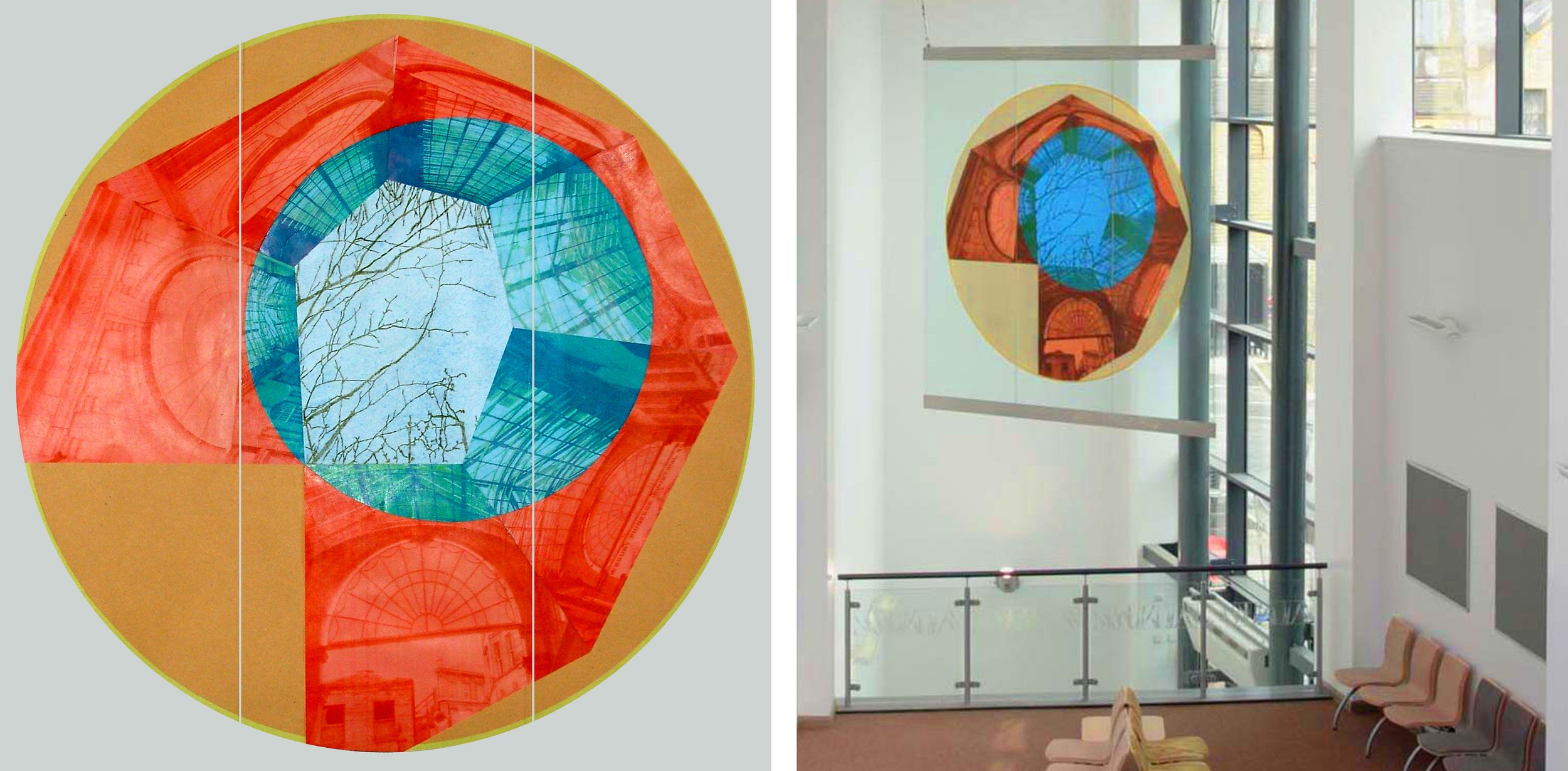In the Pauline Boty exhibition at Gazelli Art House is a stained glass panel new to me, the fourth of hers that I’ve seen. These student works from the late 1950s and early 1960s hold a great fascination for me, they are full of her unrealised potential and also of my own memories of being a stained glass student in London. That was seventeen years or so after Boty’s time, the world had moved on but stained glass didn’t seem to.
Pauline Boty, Untitled (Architectural details, Edwardian Woman) c.1960/61. Collage and stained glass panel.
The best thing was seeing the collage (above left) that shows how she worked out the design of the stained glass panel.
The best thing at my next stop, the mansion now exhibition space that is Two Temple Place, was a postcard on sale in the shop showing the design for part of one of their celebrated windows (below left). These Clayton and Bell beauties from 1895, landscapes with people and buildings at sunrise and sunset, put everything else I have ever seen in this exhibition space into the shade. These are a different type of drawing, done not to work things out but to show someone what the finished window will look like.
Clayton and Bell, water colour on paper.
I used to be able to get away with presenting that sort of drawing for a commission. I mean an ink, watercolour or pencil sketch that didn’t try to look like glass, other than by showing some lead lines. My final design for a rooflight in the new extension at the Russell Cotes Art Gallery and Museum (below left) mixes views I’d drawn along the coast in Bournemouth with scenes from the rooms in the museum. These views and scenes had gone through many versions by the time they became part of the stained glass panels, with areas working better in one or the other medium, for example the scratchy trees along the cliff tops in watercolour and a particularly good pier in painted glass.
Left: Design for rooflight at the Russell Cotes Art Gallery & Museum, Bournemouth. Sasha Ward 1990. Right: Stained glass rooflight, 3 metres in diameter.
Since that time, 1990, I haven’t often used lead in my large commissions for buildings. Alongside a changing glass technology, where the design is screenprinted onto large sheets of float glass in transparent and opaque enamels, came a different drawing and design process. It seemed untruthful (under the influence of ‘truth to materials’) to have my hand sketches made into stencils and screenprinted. Instead I started drawing shapes for stencils sometimes incorporating photographic imagery, and as the years went on, drawing on the computer. All of this translated very easily into the screenprinting process and also meant that the design could look like the finished artwork would - something that the commissioning bodies particularly liked. An example of this is the hanging panel I made in 2006 for Dewsbury Health Centre (below). The arches in the design remind me of Pauline Boty’s untitled panel, but also of how far I had moved away from making those spontaneous looking, scruffy mixed media drawings.
Left: Collage design for hanging panel at Dewsbury Health Centre, West Yorkshire, Sasha Ward 2006. Right: Hanging panel, 3.2 x 3.2 metres.








